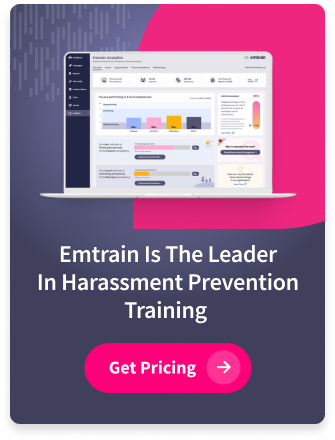Many compliance programs focus on telling employees what not to do. But preventing harassment and misconduct isn’t just about avoiding bad behavior—it’s about empowering employees to take action when they see something wrong. For HR directors, compliance officers, and DEI leaders, the question becomes: How do we give employees the tools and confidence to intervene respectfully and effectively?
The Stakes of Workplace Harassment
Workplace harassment continues to be a leading source of employee relations claims, EEOC charges, and reputational damage. Regulations across the U.S.—including state-specific mandates in California, New York, and Illinois—require harassment prevention training. Yet many programs fail to teach employees what to do in the moment, leaving them unsure of how to support colleagues or stop problematic behavior.
Without intervention, misconduct patterns go unchecked, creating systemic risks for organizations.
From Policy to Practice: Teaching Intervention Skills
Effective compliance training goes beyond policy definitions by:
- Teaching bystander intervention models—such as direct, distract, delegate, and delay—so employees have multiple safe options.
- Using realistic scenarios that reflect subtle disrespect, exclusion, or escalating conflict.
- Reinforcing respectful behaviors like active listening, inclusive communication, and constructive feedback.
At Emtrain, we combine cinematic storytelling with embedded learning questions so employees practice these skills in context, not theory. The result is a workforce better prepared to step in and prevent harm.
Building Trust and Accountability Across Teams
Organizations that train employees on bystander intervention see:
- Decreases in harassment complaints and employee relations claims.
- Stronger employee trust in reporting channels and leadership.
- Improved workplace culture rooted in accountability and mutual respect.
By empowering employees to speak up for each other, organizations move from reactive investigations to proactive prevention.
How Leaders Can Reinforce Speaking Up
- Review your policies. Ensure they encourage speaking up and protect employees from retaliation.
- Incorporate intervention models. Make bystander strategies part of your compliance training.
- Leverage analytics. Use training data to measure confidence levels in speaking up.
- Reinforce consistently. Provide microlessons that keep respectful behaviors top of mind.
Building a respectful workplace is not a one-time effort. It requires continuous reinforcement and clear accountability.
Curious how confident your employees feel about speaking up? Request a demo of our harassment prevention course with embedded analytics.








